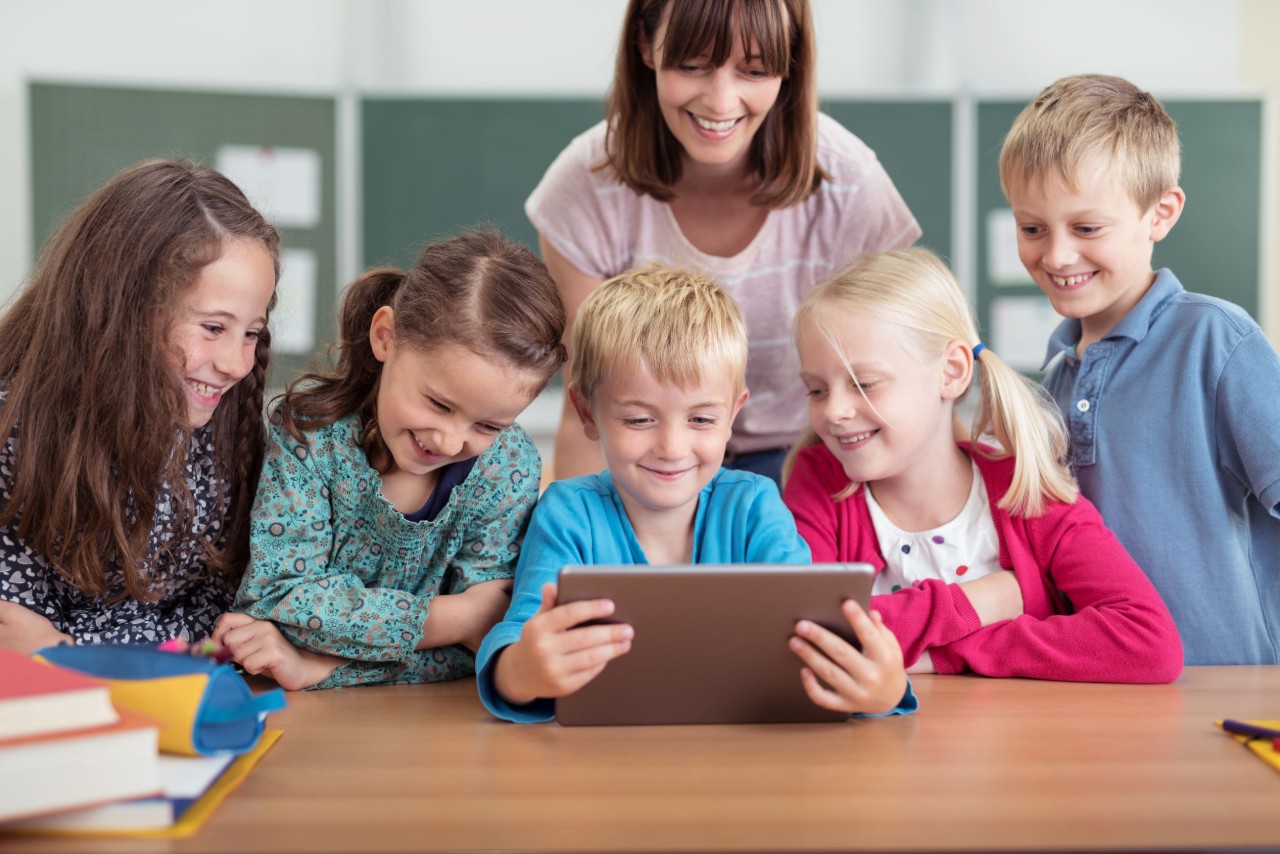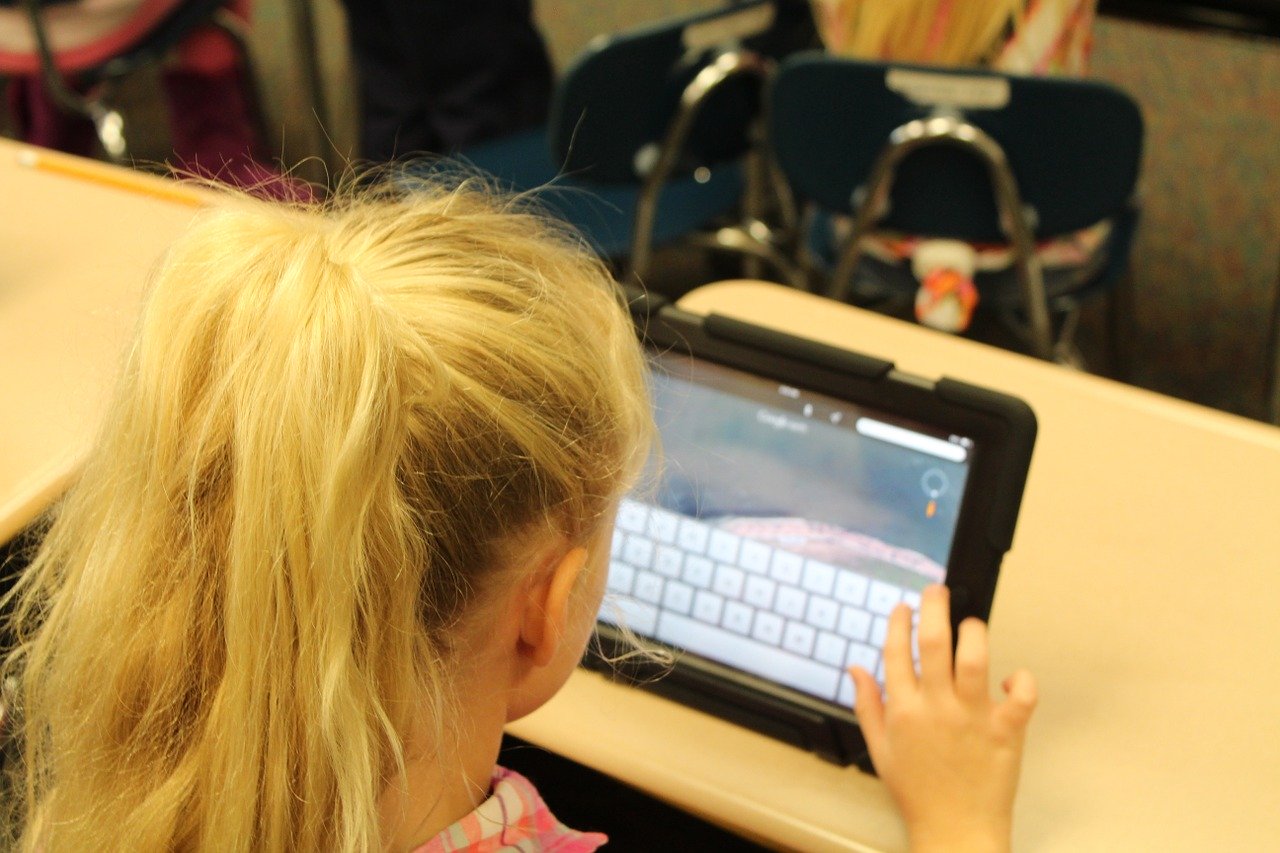
Every year there seems to be more news to follow and more stories to keep up with. This year in particular has been overwhelming with the spread of the COVID-19 pandemic.
Along with trying to discern accurate medical news (how does it spread? who is at risk?), people are also trying to navigate local and national policies around social distancing, travel bans and city lockdowns. If it’s almost impossible for an adult to keep up, imagine the pandemic from a child’s perspective.
Media literacy allows you — as an adult, a teacher, and a parent — to navigate current events. The same skills can help your students and children do the same. Here are media literacy lesson plan ideas for your classroom together with resources available to you.
It’s Never Too Early to Teach Media Literacy
Kids are using technology earlier than ever. Even toddlers can navigate iPads and many schools are handing out computers and tablets to help students learn. This creates a vacuum in which students have all of this access to information with very little idea of how to sort through it.
“I think we’ve done [students] a disservice because we’ve given everyone a device with internet access and said, ‘Here you go,’” high school Adam Dawkins says. “We’ve given them this amazing tool, but we haven’t taught them how to sift through information they encounter properly.”
As a teacher, your students will have questions for you. They want to know why they are learning at home or why certain events are happening. Even if the devices you hand out restrict access to some websites and block content, students will learn about the news and form ideas from their peers.
“It’s easier to help children develop habits around media use, inquiry, and reflection in the early years than it is to wait until they are defiant middle schoolers,” says Faith Rogow, founding president of the National Association for Media Literacy Education. “Think of it like driving. We’re not going to turn over the car keys to our toddlers, so we aren’t exactly teaching them to drive yet, but they are learning about the rules of the road from what we do.”
Kids who can barely walk know green means go, yet are obviously nowhere near ready to take a driver’s test. The same concept applies to media literacy. Your students might not subscribe to The Wall Street Journal, but they see how adults interact with it.

Introduce New Media Regularly
As students move through elementary school and beyond, they will encounter new media sources, games and websites with information. Parents can talk about media literacy gradually as their kids get older and engage with the internet more, writes H.R. Venkatesh, director of training and research at BOOM Factcheck.
This approach can also be applied to teachers. Media literacy doesn’t need to be one lesson plan, so much as a common theme throughout the year. A few examples Venkatesh provides include:
- Talk about depictions of violence in games.
- Explain the concept of algorithms. Students use social media sites and are affected by and should understand algorithms.
- Teach students how to cross-reference and fact-check stories on the internet.
Any time a new form of media is discussed or used in the classroom, teachers can use it as an opportunity to explore how it works, why it is effective, and any potential pitfalls of using it.
Challenge Students to Question Their Sources
One of the top skills students can learn is to question the media they consume. At some point in their lives, your students will come across a source that seems reputable but actually has a hidden agenda. Most likely, they will come across these sources on a regular basis, as do most adults.
XQ Institute’s Mary Ryerse and Lauren Vertrees recommend the acronym IMVAIN when teaching about source reliability and internet fact-checking:
- Independent sources: the author has no agenda to push.
- Multiple sources: multiple people or organizations are cited in the content.
- Verified evidence: there are proven facts backed up by research or analysis.
- Authoritative: the sources cited have the knowledge and right to speak on the topic.
- Informed: the people speaking are informed about the particular situation.
- Named sources: there are actual names used, not just “anonymous commenters.”
When you take each of these elements into consideration, you can identify weak reporting or biased stories in the news.
“It’s crucial to discern the truth in a world where media comes at you from every angle,” says tech writer Kayla Matthews. “Many adults struggle to decipher fact from fiction, and as scams grow more advanced, finding honesty becomes difficult. Teaching kids how to identify fake from real equips their growing minds with the tools needed to navigate a complex landscape.”
With social media and the internet, students have easy access to every form of information — inaccurate and biased or false included. It’s important they know to look for reliable information that is unbiased and accurate.
Focus on Images and Videos as Well As Written News
Content is important with media literacy, but so is imagery. Viral images can spread within a few hours, even if they are photoshopped or taken out of context. It is just as important to recognize dangerous or fake visual content as incorrect or biased written news.
The group Educate and Empower Kids has a lesson plan that teaches kids to deconstruct images. This can be done with advertisements to help kids with their self-esteem or with news images that are used for shock factor.
Make Them Content Creators
One of the best ways to teach kids about the dangers of consuming media without critical thinking is to make them content creators themselves.
“We want to shift from students being solely consumers to being creators who can express themselves through media,” writes teacher and digital learning coach Ashley Fort. “When students create media, especially with the questions for analyzing and evaluating in mind, it helps them to consider the impact their creations will have on their audience.”
From making memes to writing news articles, students can learn how to be mindful of their audiences and understand how quickly information spreads.

Turn to Google for Help
Most students will use Google for research on school projects as well as general questions and inquiries. You can use resources developed by Google to help students use this search engine wisely.
In June 2019, Google debuted six new media literacy activities through its Be Internet Awesome program. The fundamentals of this program include sections like “Share With Care” to teach about news spreading quickly, and “Secure Your Secrets” on personal privacy. There are games involved with the program and a curriculum that teachers can use.
“While good digital safety and citizenship resources exist for families, more can be done for media literacy,” says Amy Mascott, literacy consultant and founder of TeachMama.com. “I’ve worked alongside dozens of educators who believe that media literacy is essential to safety and citizenship in the digital age, but agree that it’s a topic that can be tough to cover.”
These lessons are a good place to start for developing your media literacy curriculum.
Teachers Can Prepare Older Students to Be Informed Adults
Media literacy isn’t just a lesson for elementary and middle-school students. This concept should be taught at all ages and grades.
For example, older students can start to differentiate which news sources are naturally more reliable than others. Ad Fontes Media created the widely-shared Media Bias Chart, which they update regularly. The chart highlights news sources that are biased toward one political party over another and compares that with outlet accuracy. Teachers can have students use the chart when researching current events; hopefully, they’ll continue using it as a reference in college and later in their careers.
Marshall Bright at Sheknows points to studies that have found younger students actually trust teachers and parents more than the internet. When presented with conflicting information by an online source and a teacher, more students thought the teacher was right. On the other hand, adults were more likely to trust the internet over people.
“Researchers predict kids will lose their internet skepticism as they age — just as they will also inevitably rely on technology and the internet more,” she writes. “If we want to make sure they don’t put all their faith in technology, parents and teachers are going to have to step in to teach media literacy as well.”
As students stop believing that teachers and parents know everything, they will turn to the internet. As a teacher, you need to make sure they find accurate sources to get the answers they need.

Additional Resources for Media Literacy Lesson Plans
There are several organizations dedicated to teaching students about media literacy. Use the following organizations, journalists and nonprofits to guide your discussions and come up with engaging media literacy lessons:
- NewseumED provides free learning tools on media literacy for students of all ages — even college-level and adults. You can pick a skill that you want students to develop or focus on the curriculum on the grade level that you teach. Many of these lessons are interactive and come with several discussions, so you can keep talking about media literacy throughout the year.
- MediaSmarts is a Canadian organization that provides educational resources to teach digital and media literacy. They have several articles and YouTube videos on a variety of topics. You can start with a general concept like television, move into internet issues like gambling or cyberbullying, and even dive into resources on intellectual property. This site has resources for both parents and teachers so students can keep learning at home.
- Media Literacy Now fights to give K-12 students the comprehensive media literacy education and skills they need. You can find lesson plans sorted by category, age range, and even by state. This means you can find what students are expected to know where you live and find gaps in the curriculum that you may want to fill.
- In an article for News Media Alliance, Arantxa Hernandez compiled a list of non-fiction books for students looking to learn more about media literacy. She explains the content in each book and the age range that it is relevant for. You can pick and choose sections from these books that are valuable, or you can use one book to guide your entire media literacy lesson plans.
- Saga Briggs curated 10 media literacy lessons in an article for Canva. These lessons start with the basic task of recognizing fake news and work through the processes of identifying tone and challenging facts and figures.
Media literacy is something that educators themselves need to keep learning about each year. The news sources will continually change with new social networks popping up. By staying media literate yourself, you can prepare the next generation of critical thinkers to challenge what they read, see and hear.
Images by: stockbroker/©123RF.com, racorn/©123RF.com, SchoolPRPro, ExplorerBob


What do you think?